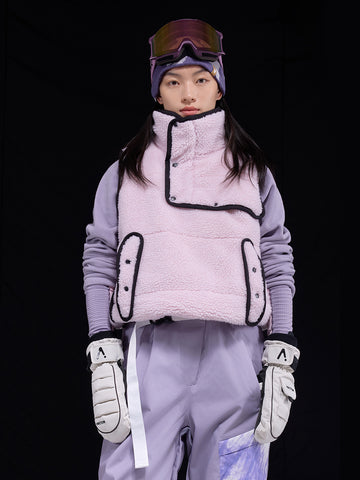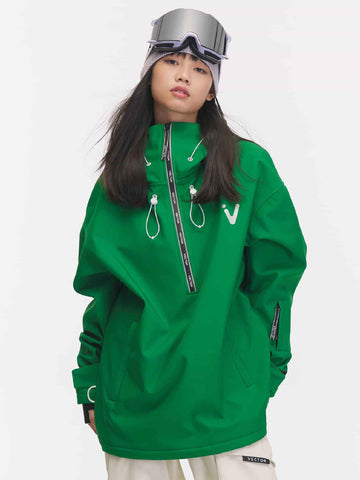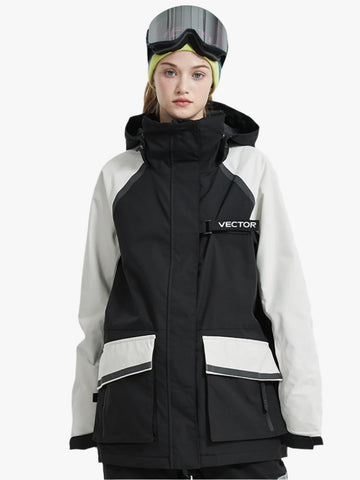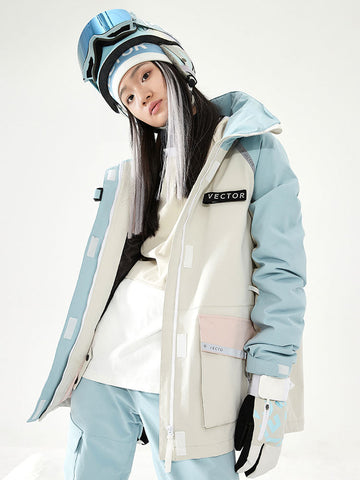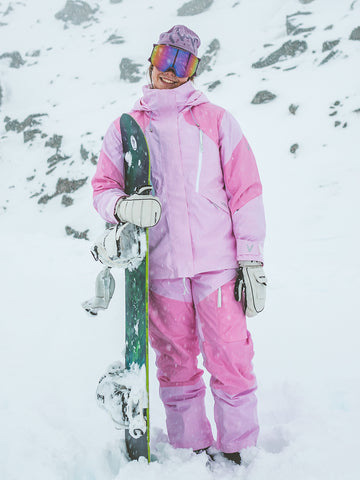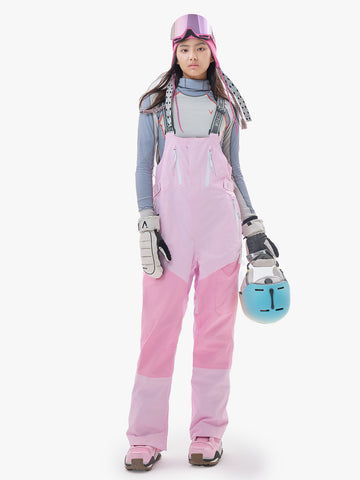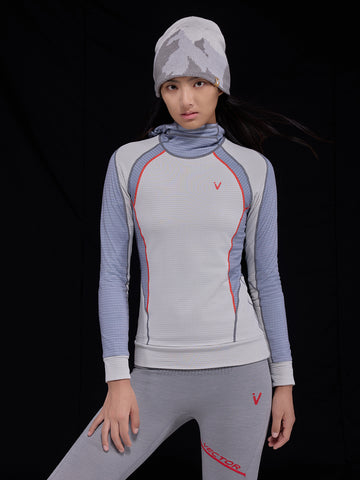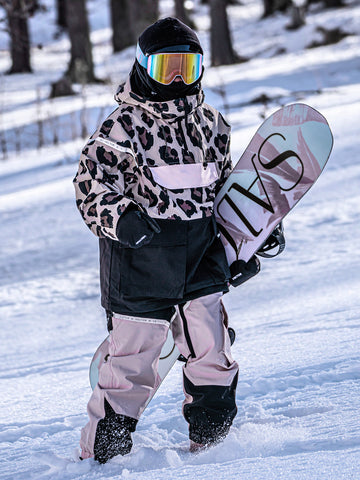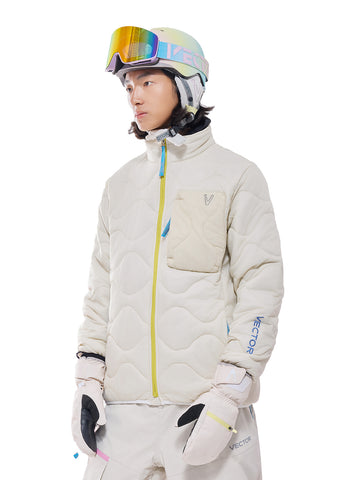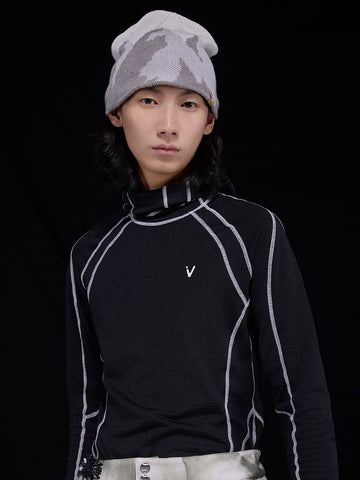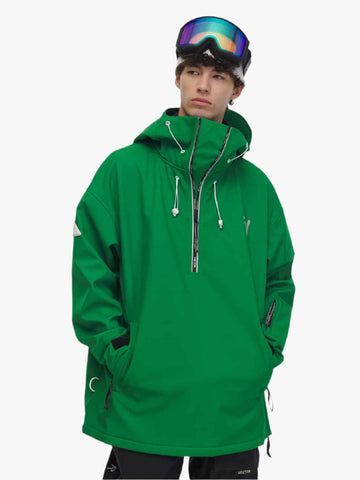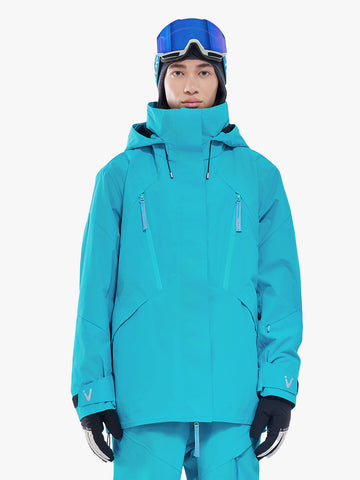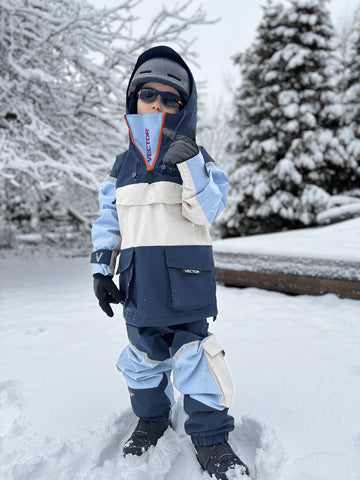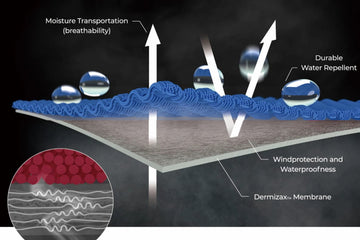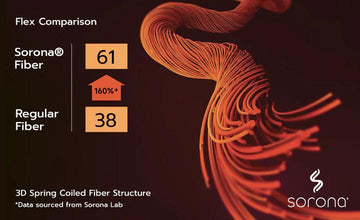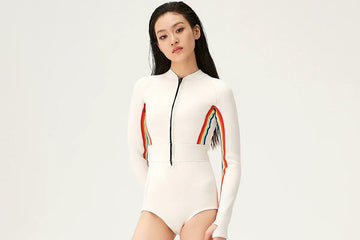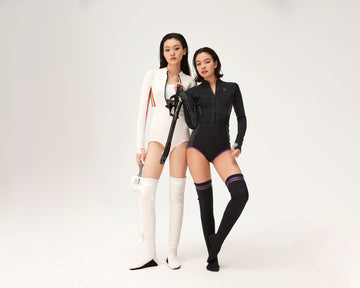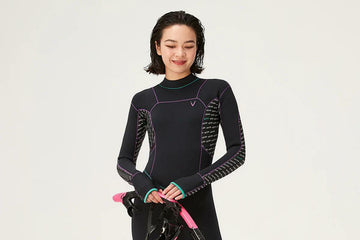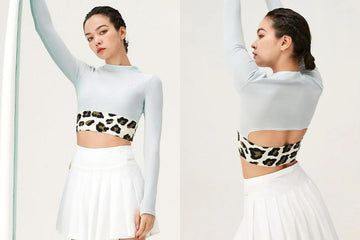Ready to dive into the world of water sports? Whether you're a surfer, diver, or paddleboarder, the first step is choosing the perfect wetsuit. Why do we wear wetsuits? Wetsuits are made from neoprene, which helps retain body heat, keeping you warm in cold water. They provide buoyancy and protect against abrasions and marine life stings, making them a necessary piece of equipment for water sports. But you're unsure about how to choose a women's wetsuit. There are many types of wetsuits. A chest zip wetsuit is one type of wetsuit. With so many options available, it can feel overwhelming. But fear not! VECTOR MOTION has the best wetsuits for women. Our comprehensive guide will walk you through everything you need to know to make the right choice and help you find a high-quality wetsuit at a budget-friendly price.
We will guide you:
Types of Wetsuits
Zip Systems of Wetsuits
What are the Materials?
How to Get the Perfect Fit of Wetsuits?
What Thickness Wetsuit Do I Need?
Stitching
Types of Wetsuits
From full-body suits to shorty styles, wetsuits come in all shapes and sizes, just like us water-loving enthusiasts. When choosing a wetsuit, consider factors such as water temperature, mobility needs, and personal preferences to select the most suitable type for your adventures.
Full Wetsuit: Covers the entire body, including arms and legs, providing maximum warmth and protection in cold water conditions.

Spring Suit: Also known as short wetsuits, these cover the torso and thighs, leaving the arms and lower legs exposed. Ideal for warmer water temperatures or when more mobility is needed.

Long John: Similar to a spring suit but without sleeves, providing extra warmth for the core while allowing more freedom of movement in the arms.
Short John: Similar to a long John but shorter in length, typically ending above the knees. Offers core warmth while allowing for increased mobility in the arms and legs.
Top or Jacket: A separate piece is worn on the upper body, usually sleeveless or with short sleeves. Provides additional warmth and protection when paired with board shorts or swim leggings.
Farmer John/Jane: A sleeveless wetsuit with full-length legs, often worn by divers or in colder water conditions where extra insulation is needed for the lower body.
One-Piece Surf Suits: Introducing the latest trend in surfing fashion: one-piece surf suits! These suits not only provide optimal coverage but also ensure comfort while wearing. Offering excellent UPF sun protection, they keep you stylishly protected in the waves. Innovative in design, these surf suits seamlessly blend functionality with fashion. Whether you're riding the waves or strolling on the beach, one-piece surf suits are your best choice for staying both protected and stylish in warm waters.
Zip Systems of Wetsuits
Wetsuits come with various zip systems, each offering unique features and benefits. The most common zip systems include back zips, chest zips, and zipperless designs.
Back zips: Back zips are characterized by a zipper running down the back of the wetsuit. They are favored for their ease of use, allowing for quick and simple entry and exit from the wetsuit. VECTOR MOTION thoughtfully designed an extended zipper on the back, allowing us to zip it up by ourselves without needing assistance.
Chest zips: Chest zips feature a zipper across the chest area of the wetsuit. This design offers a more secure seal compared to back zips, making it ideal for colder water conditions where minimizing water entry is crucial.
Zipperless: Zipperless wetsuits, as the name suggests, lack any zippers for closure. Instead, they often utilize innovative entry systems such as stretchy materials or overlapping panels. These designs offer maximum flexibility and freedom of movement, as there are no zipper constraints.
What are the Materials?
Wetsuits are typically made from neoprene, a synthetic rubber material known for its flexibility, insulation properties, and ability to trap a thin layer of water against the skin to provide warmth. For most people, it's the ideal choice. Like the VECTOR MOTION wetsuit crafted with 80% neoprene and 20% nylon, this wetsuit wraps you in coziness like a warm hug. Its inner layer works like magic, swiftly trapping warmth to keep you toasty while keeping icy seawater at bay. And don't worry about bumps and scrapes – the outer layer is tough as nails, shielding you from any surprises the ocean throws your way.
How to Get the Perfect Fit of Wetsuits?
Ensuring your wetsuit fits just right is crucial for comfort and performance in the water. Finding the perfect wetsuit fit isn't just about comfort; it's your passport to an unforgettable aquatic adventure. Like a second skin, the right fit ensures optimal performance, warmth, and comfort, allowing you to ride the waves with confidence and agility.
By following these tips and taking the time to find the perfect fit:
-
The first step, take accurate measurements of your chest, waist, hips, and inseam. Use these measurements as a guide when selecting your wetsuit size.
-
When trying on a wetsuit, whenever possible, try on different wetsuits to find the one that fits your body shape and size best. Pay attention to how it feels around your chest, shoulders, and knees.
-
Check for Snugness: Your wetsuit should fit snugly without feeling too tight or constricting. There should be no gaps or folds, especially around the armpits, crotch, and neck.
-
Test Mobility: Move around in the wetsuit to ensure it allows for a full range of motion. You should be able to bend, squat, and reach comfortably without any restrictions.
-
Pay Attention to Seams: Check that the seams lie flat against your skin to prevent chafing and irritation. Reinforced or taped seams offer added durability and comfort.
What Thickness Wetsuit Do I Need?
What thickness should your wetsuit be? The ideal thickness of your wetsuit depends on various factors such as water temperature, personal preference, and the duration of your water activities. Generally, wetsuits range from 2mm to 7mm in thickness, with thinner suits suitable for warmer waters and thicker suits for colder temperatures. The 2.5mm and 3mm wetsuits are ideal for both warm and cool water environments. The 2.5mm thickness is suitable for warmer conditions, such as summer or tropical regions, while the 3mm is better suited for slightly cooler waters, like those found in autumn or spring seas or cooler climates. It's essential to choose a thickness that provides adequate insulation without restricting movement or causing overheating.
Stitching
The stitching of a wetsuit also plays a crucial role in its overall quality and effectiveness. Proper stitching ensures the integrity, durability, and waterproofing of the seams, preventing water from seeping into the wetsuit and compromising its insulation properties. Therefore, paying attention to the stitching of a wetsuit is essential to ensure a comfortable and reliable experience during water activities.
Flatlock Stitching: Flatlock stitching joins neoprene panels with a flat seam, offering comfort and flexibility. However, it may permit water entry through needle holes, suitable for warm waters.
Glued and Blind Stitched (GBS): GBS stitches panels by partially stitching through neoprene after gluing them, creating a watertight seam. Ideal for cooler waters, it minimizes water entry and enhances warmth.
Sealed Seam: Sealed seam construction reinforces waterproof seams using liquid sealant or tape. Ideal for cold water and extreme sports, it enhances durability and protection.
Overlock Stitching: Overlock stitching combines stitching and overlocking for durability. It prevents fraying and increases seam strength, commonly used in mid-range wetsuits for versatility.
FAQ
Q: How do I choose the right wetsuit?
A: When choosing a wetsuit, consider factors such as water temperature, intended use, and personal preference. Determine whether you need a full wetsuit, shorty, or spring suit based on the conditions you'll be in. Look for features like thickness, zipper type, and seam construction that suit your needs.
Q: Should I get a 3mm or 5mm wetsuit?
A: The thickness of your wetsuit depends on the water temperature you'll be in. A 3mm wetsuit is suitable for warmer conditions, such as summer or tropical waters. On the other hand, a 5mm wetsuit provides better insulation and is ideal for colder waters, such as spring or fall seasons.
Q: How do I figure out what size wetsuit I need?
A: The wetsuit should fit snugly but not so tight that it restricts your movement or breathing. There should be no excessive folds or gaps, especially around the lower back and underarms. When trying it on, make sure you can move your arms and legs freely and that the suit feels like a second skin without being uncomfortable.
References:
https://www.watersportsoutlet.com/guides/wetsuits/
https://www.wetsuitcentre.co.uk/wetsuit-blog/post/6-top-tips-for-buying-your-first-wetsuit
https://www.evo.com/guides/wetsuit-thickness-and-temperature-chart
https://dipndive.com/pages/how-to-choose-a-wetsuit
https://quiksilver.com.au/expert-guide/surf/buying/how-to-choose-wetsuit.html



